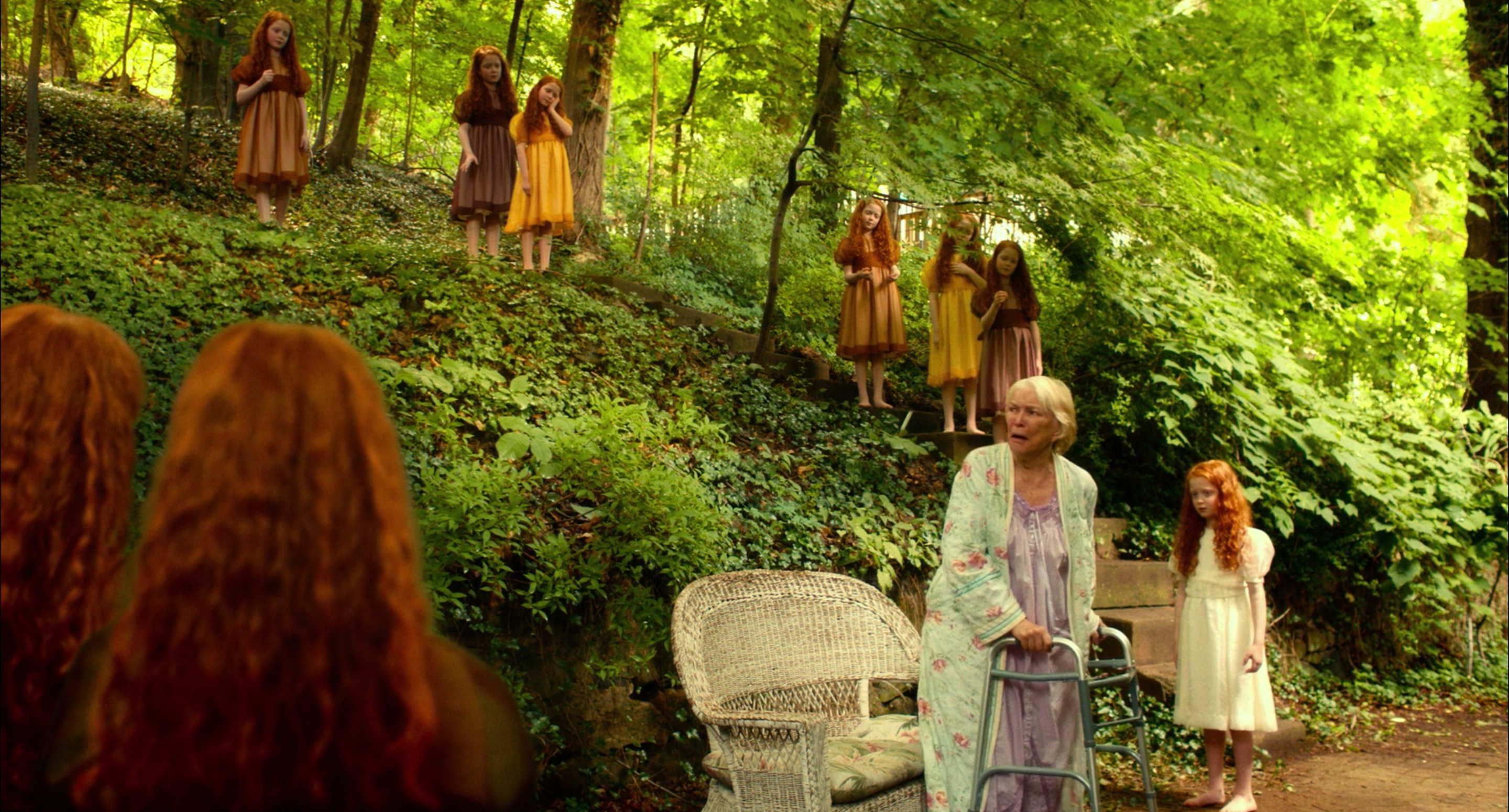by Daniel Walber
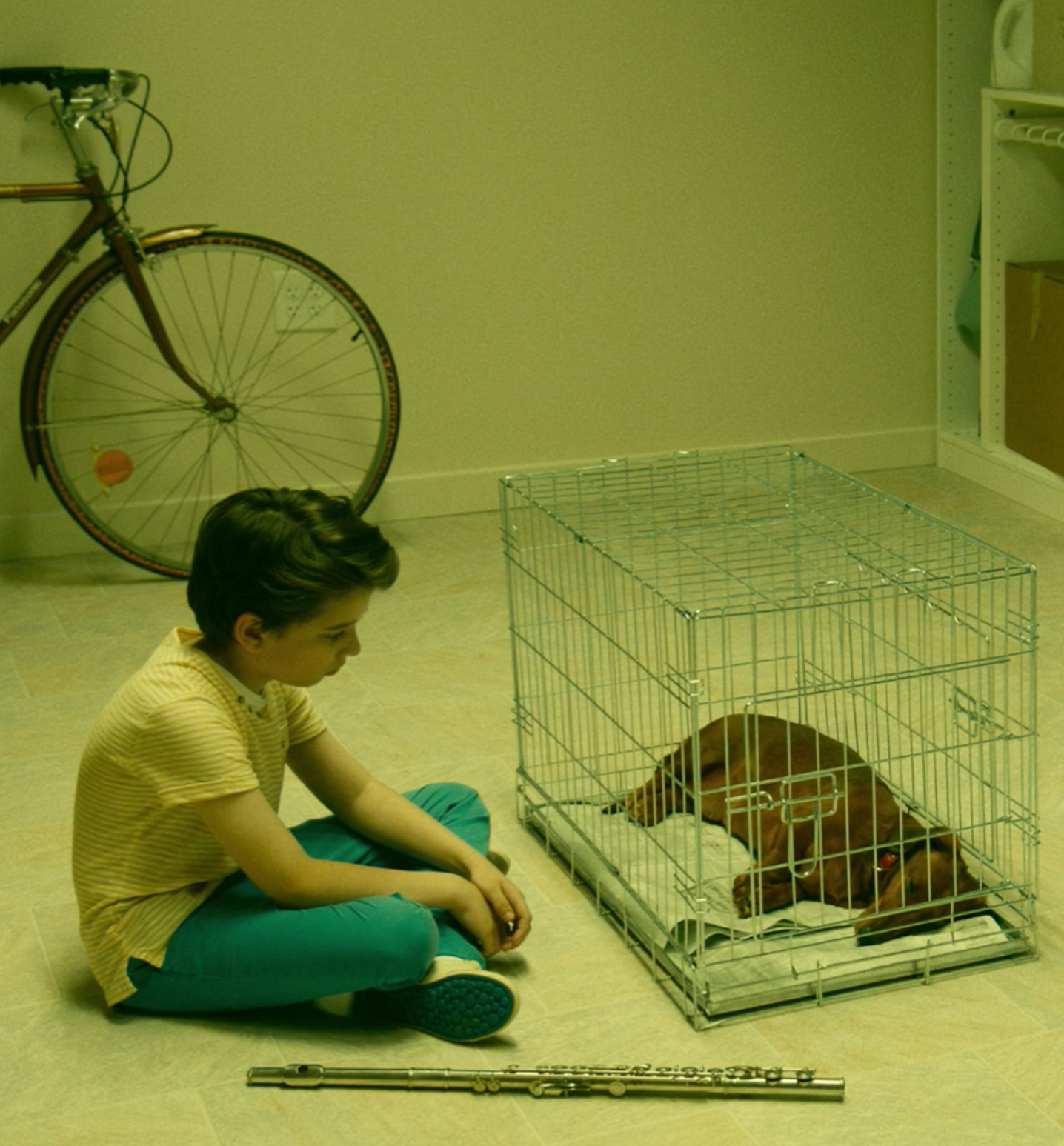
Wiener-Dog is a deceptive movie. It is technically a sequel to Todd Solondz’s cult classic Welcome to the Dollhouse, but only for about a quarter of its running time. It’s actually an anthology, built around the often tragic life of an adorable, stoic dachshund. Each stop is totally separate from the last, each new character a slightly different riff on solitude and bitterness.
Yet even this structural diversity is deceptive. For while the film contains a variety of stories and locations, it is essentially one long expansion of a single set. The opening credits play over an anonymous animal shelter, where Wiener-Dog patiently waits to be adopted. One side has bars, the other a clear panel. The bright light highlights the sickly green walls, like the antiseptic glow of a dystopian hospital.
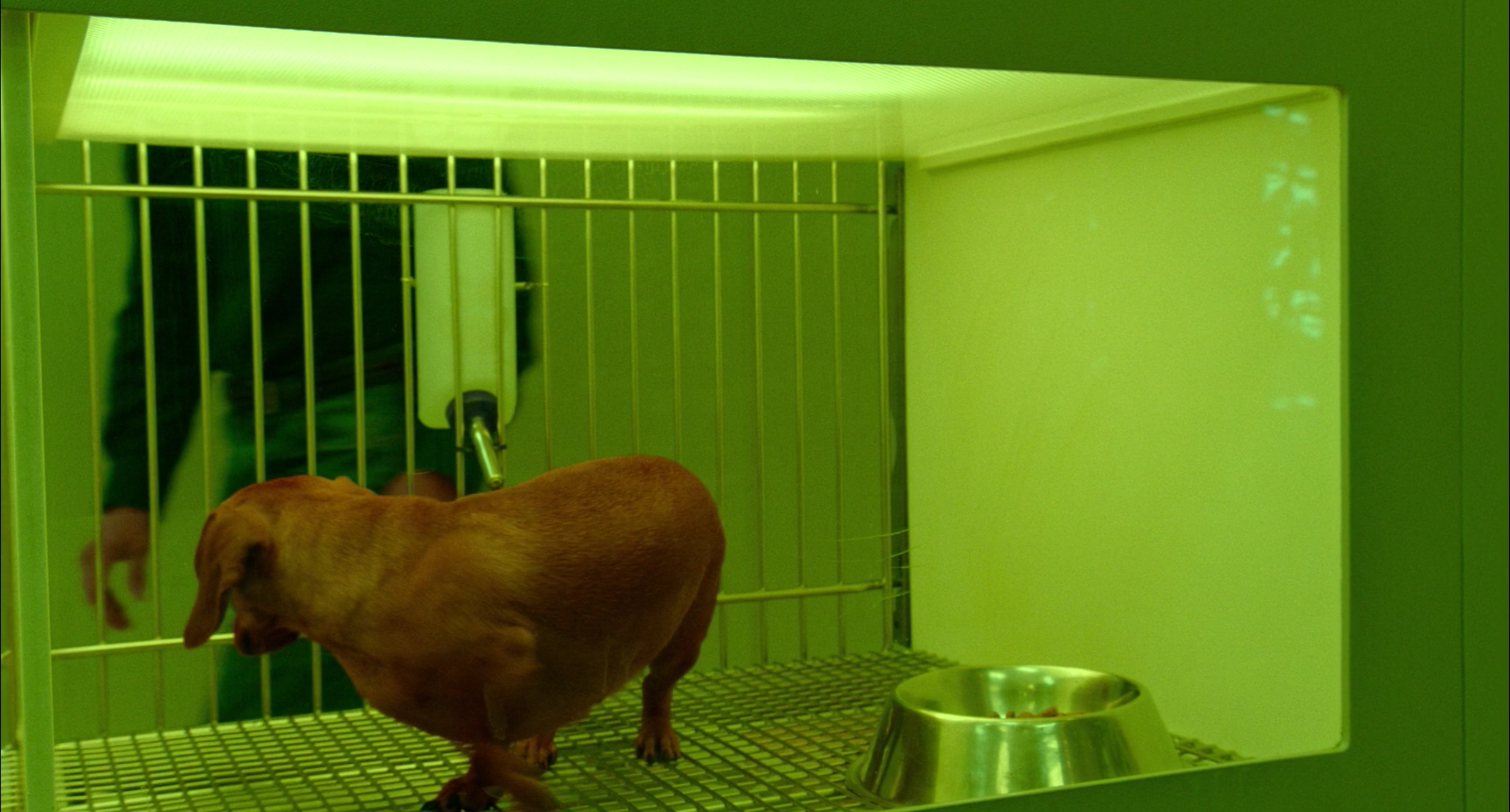
Wiener-Dog makes it out, but the cage lingers...
Production designer Akin McKenzie, art director Max Wixom and set decorator Daniel Kersting make constant reference to its texture, color and shape. It becomes clear that it is not simply a depiction of the condition of dogs, but a bleak metaphor for the lives of us all.
The first stop on this road is the home of Danny (Tracy Letts) and Dina (Julie Delpy), an upper-middle-class family with a modernist house and a lonely son. Their sleek furniture is certainly well-chosen, but it’s hardly a novel take-down of suburban respectability. The real story is in the basement, where they keep Wiener-Dog in a metal cage.
The room is lit with almost the same green as the shelter. The cage is right at the center, next to some dark green cleaning implements. We know that there’s a perfectly pleasant house with lots of natural light just beyond the door, but that doesn’t banish the subterranean chill of this captivity.
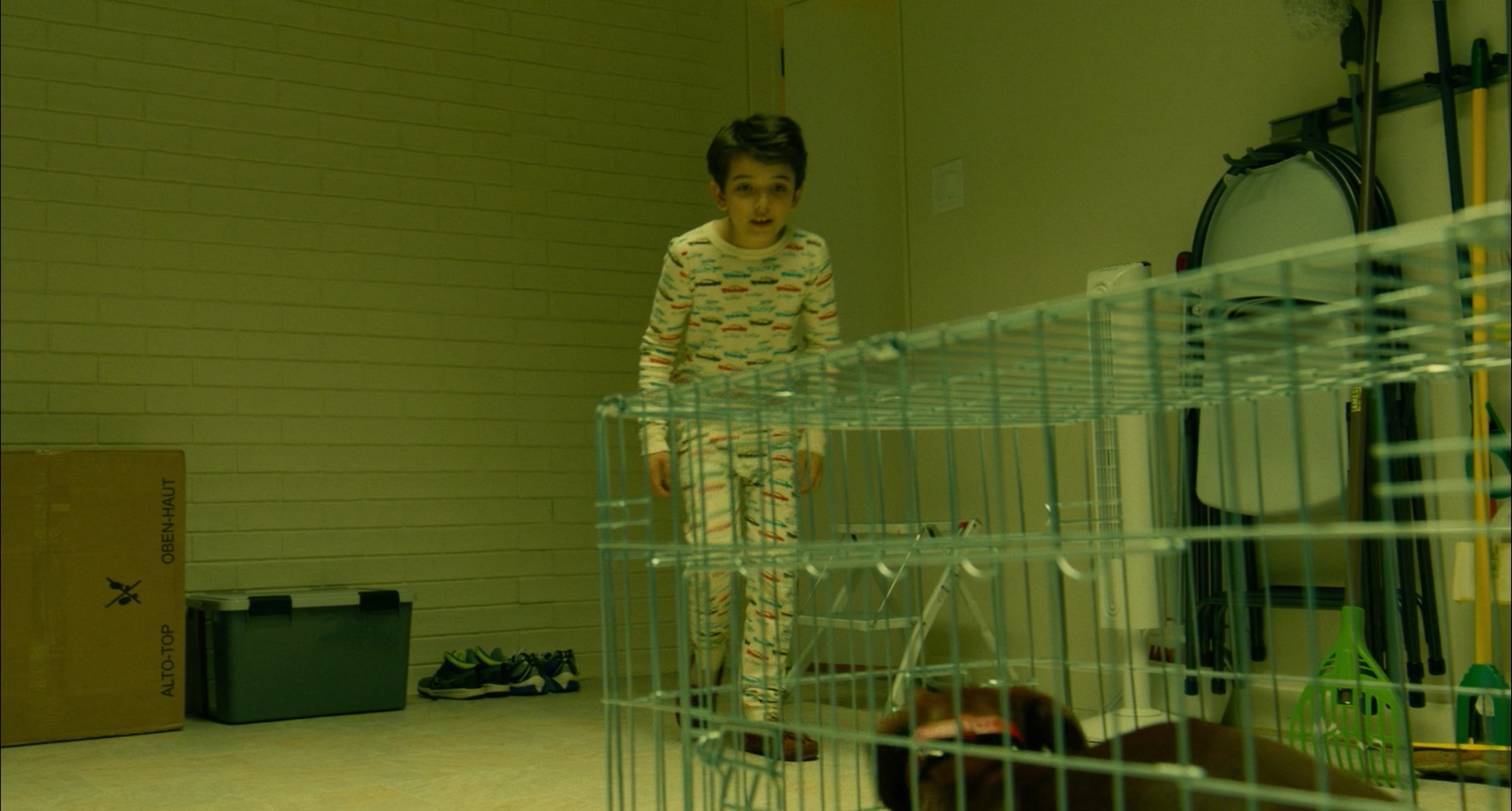
After Wiener-Dog is pushed out, betrayed by her own internal organs, we get one last glimpse of this room. The cage is on its side. The floor has been recently cleaned with a green bucket and mop. Notice the shade of the detergent on top of the washing machine. For the shelter dog, this wasn’t much of a change.
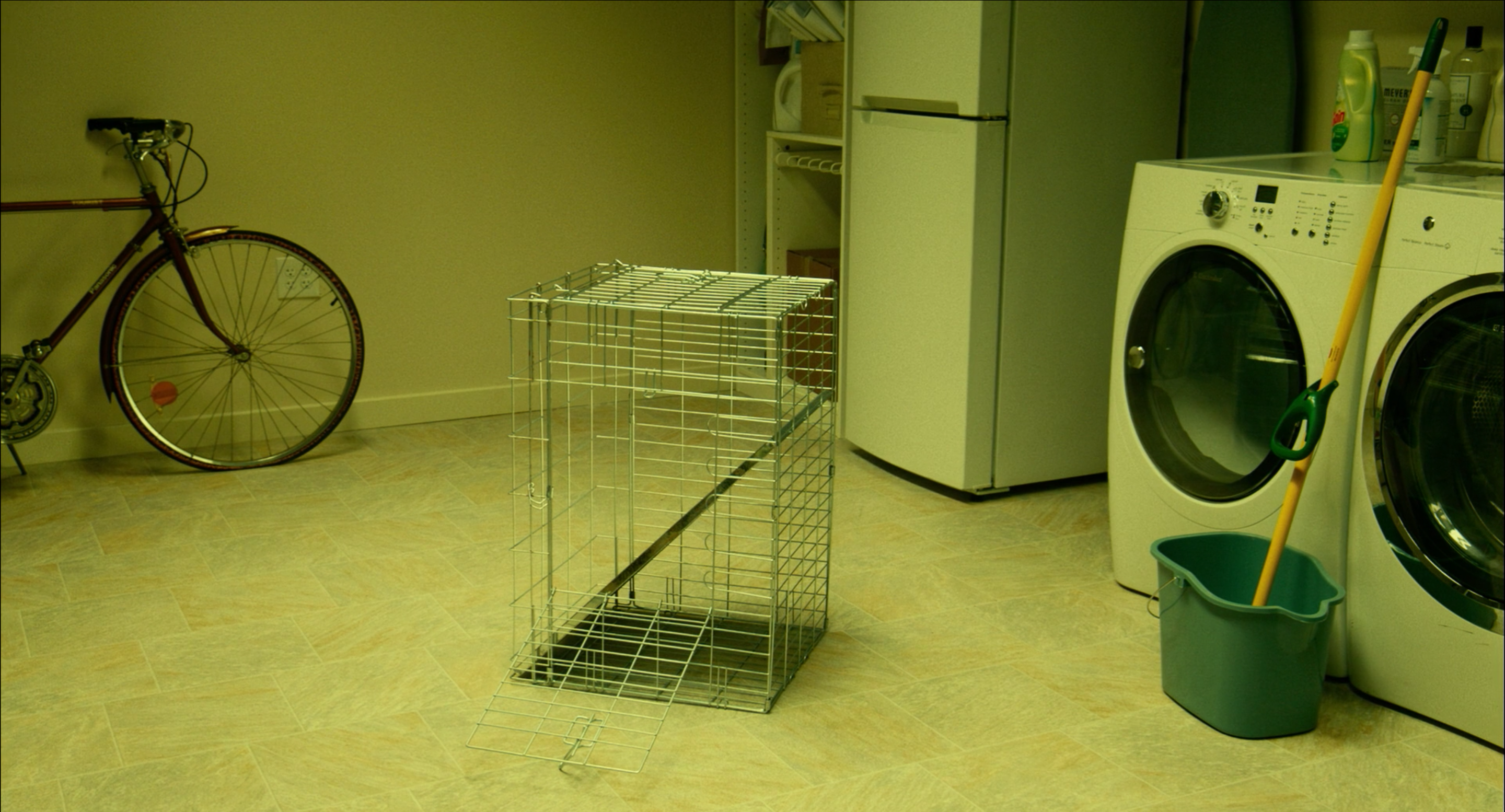
Silent, heartless environments aren’t only for dogs, of course. The first tale after the film’s weird intermission is that of Dave Schmerz (Danny DeVito), a disaffected screenwriting professor beset by idiot students and ignored by Hollywood agents. His last name is the German word for pain.
He doesn’t keep Wiener-Dog in a cage, but he does seem to live in one himself. The wallpaper of his doctor’s office continues the design fixation with sickly green, further underlined here by both the plant and its pot.
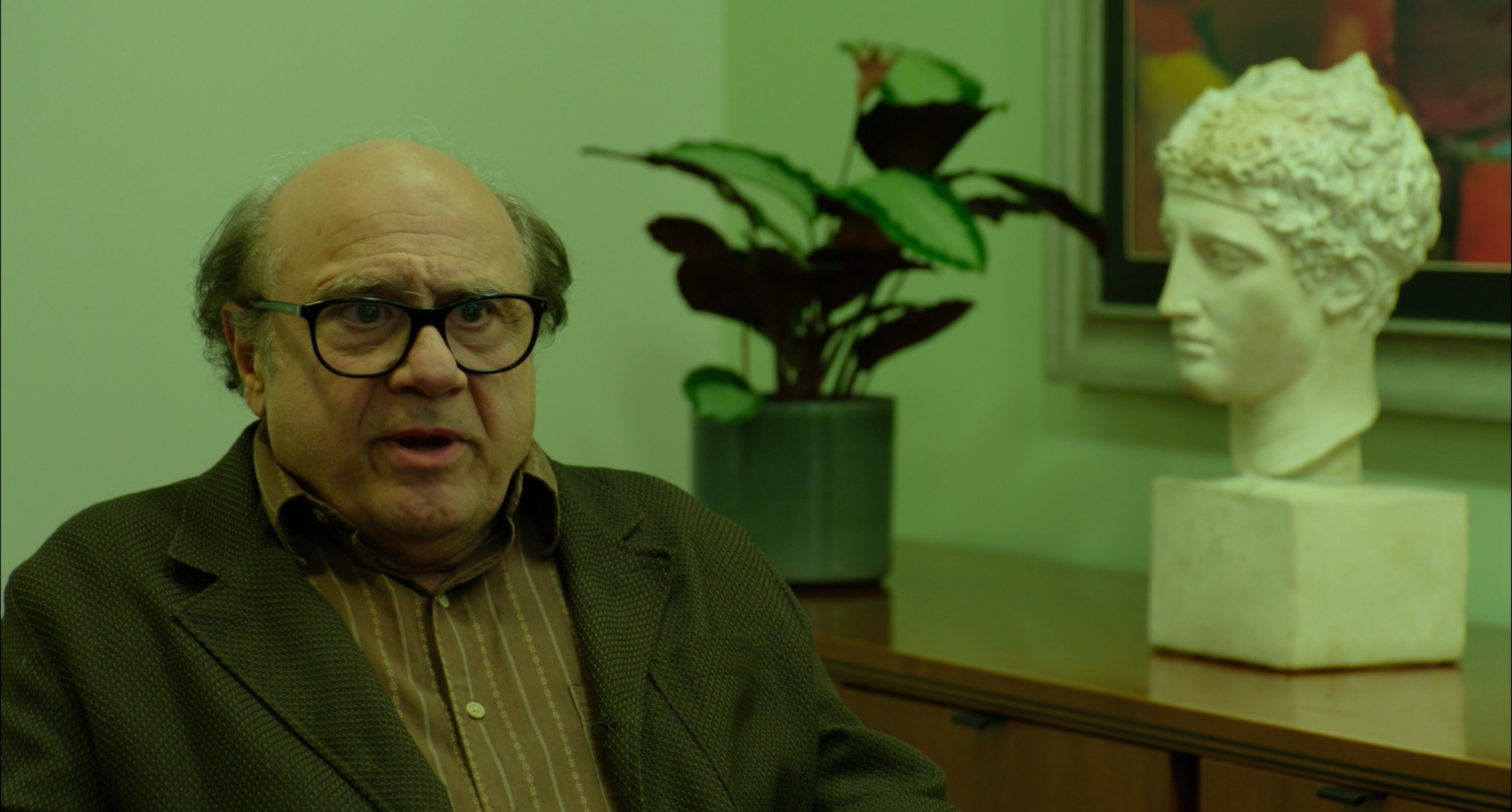
Soon he finds himself in a second office, where his boss informs him that his negative attitude could get him fired. The wallpaper doesn’t match, but the color palette is maintained by the more numerous plants. The books on the shelf also subtly mimic the greens of the previous spaces.
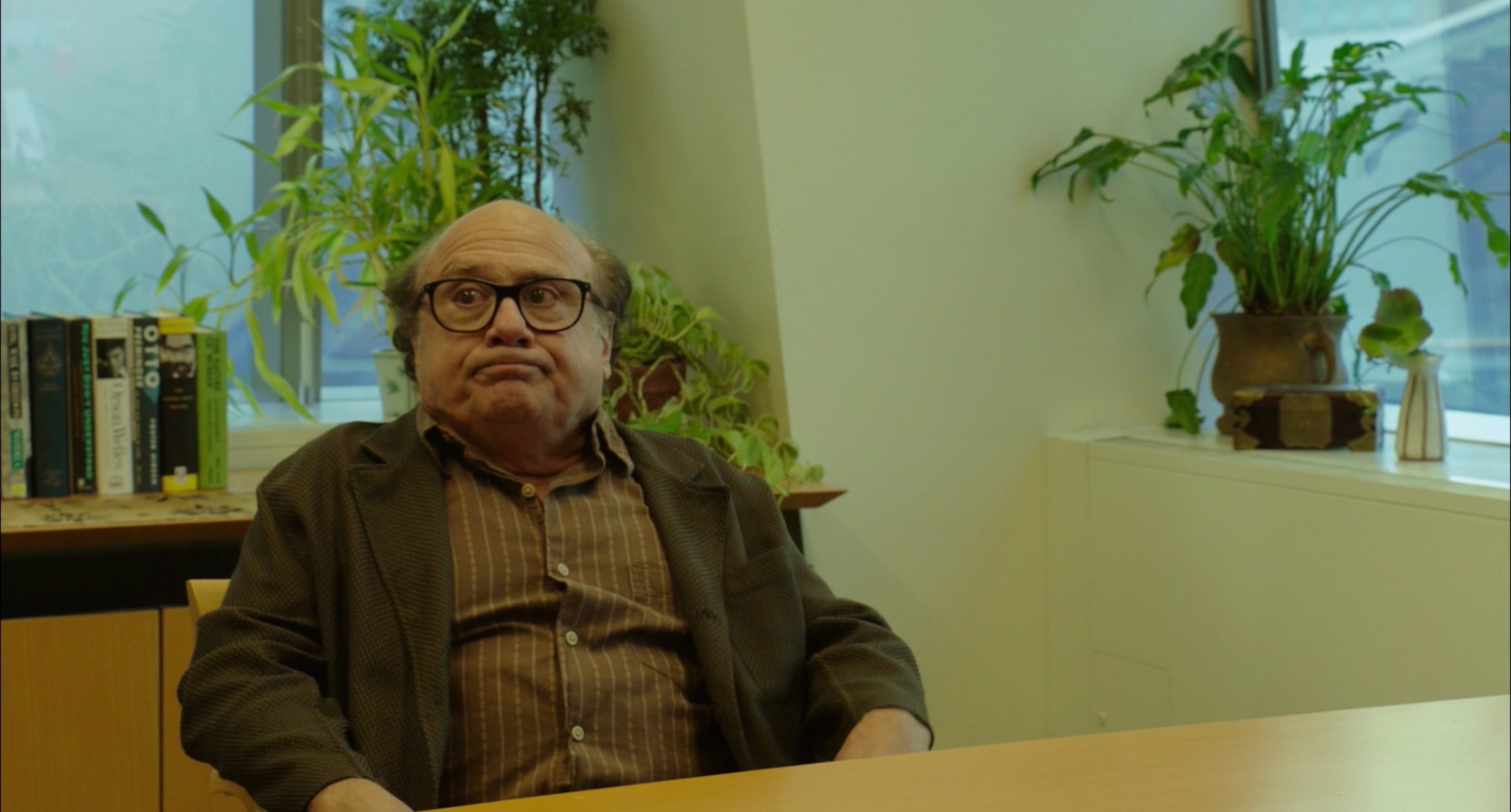
Schmerz eventually cracks and lashes out. Wiener-Dog’s next owner is much more sedentary. Ellen Burstyn plays “Nana,” the star of a segment so sparsely scripted that she doesn’t even get a name. She lives next to a bright green patch of forest. At first it seems idyllic and lush, as if green has finally abandoned its desolate symbolism.
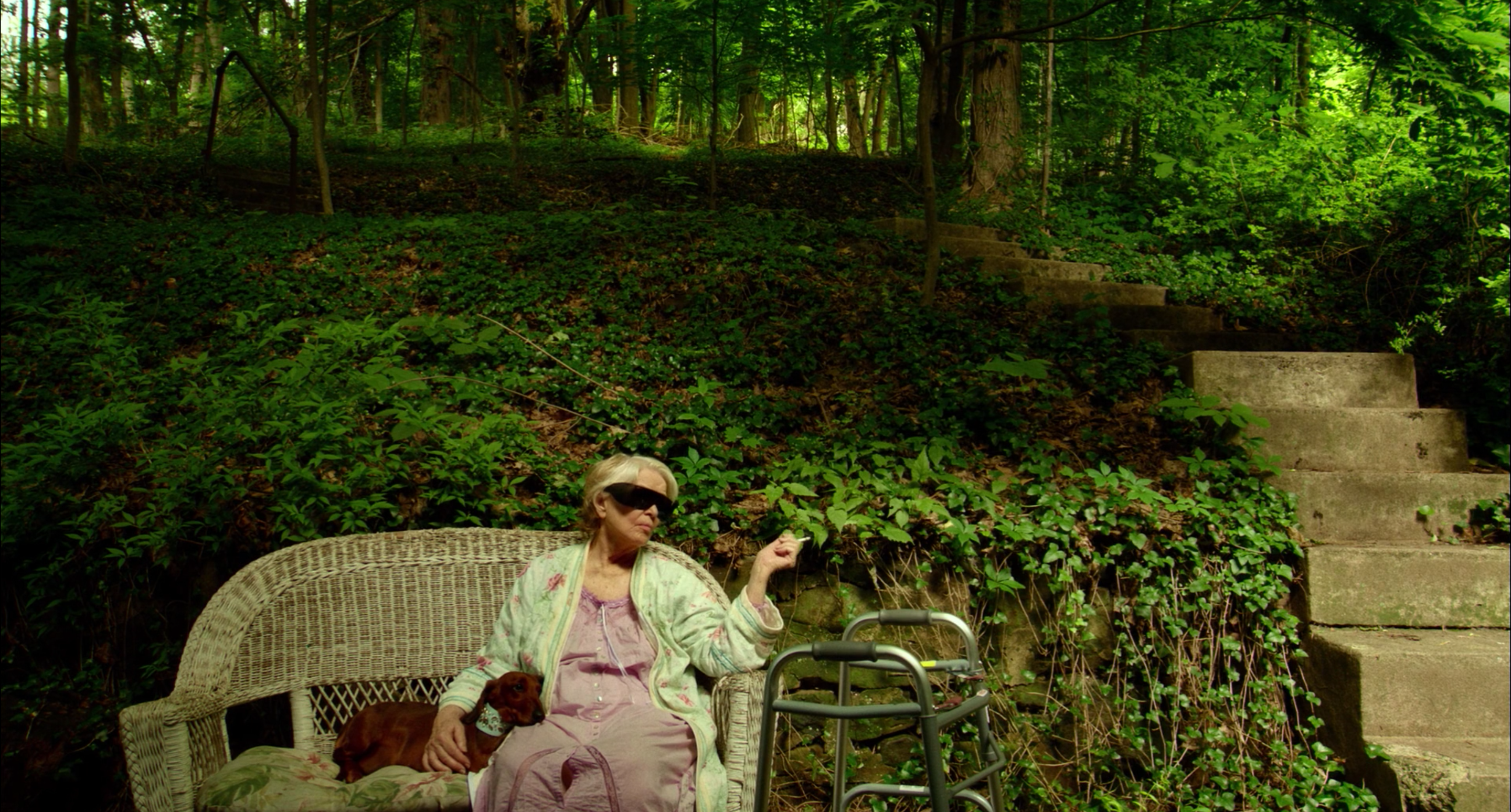
Her house is overstuffed with furniture, books and framed paintings. As we learn from her brusque dialog with her granddaughter (Zosia Mamet) she’s probably the subject of most of them. They assert her identity in a space that already stands out from the antiseptic enclosures of previous segments. Her granddaughter’s top, a green that recalls Wiener-Dog’s cages, is an intrusion.
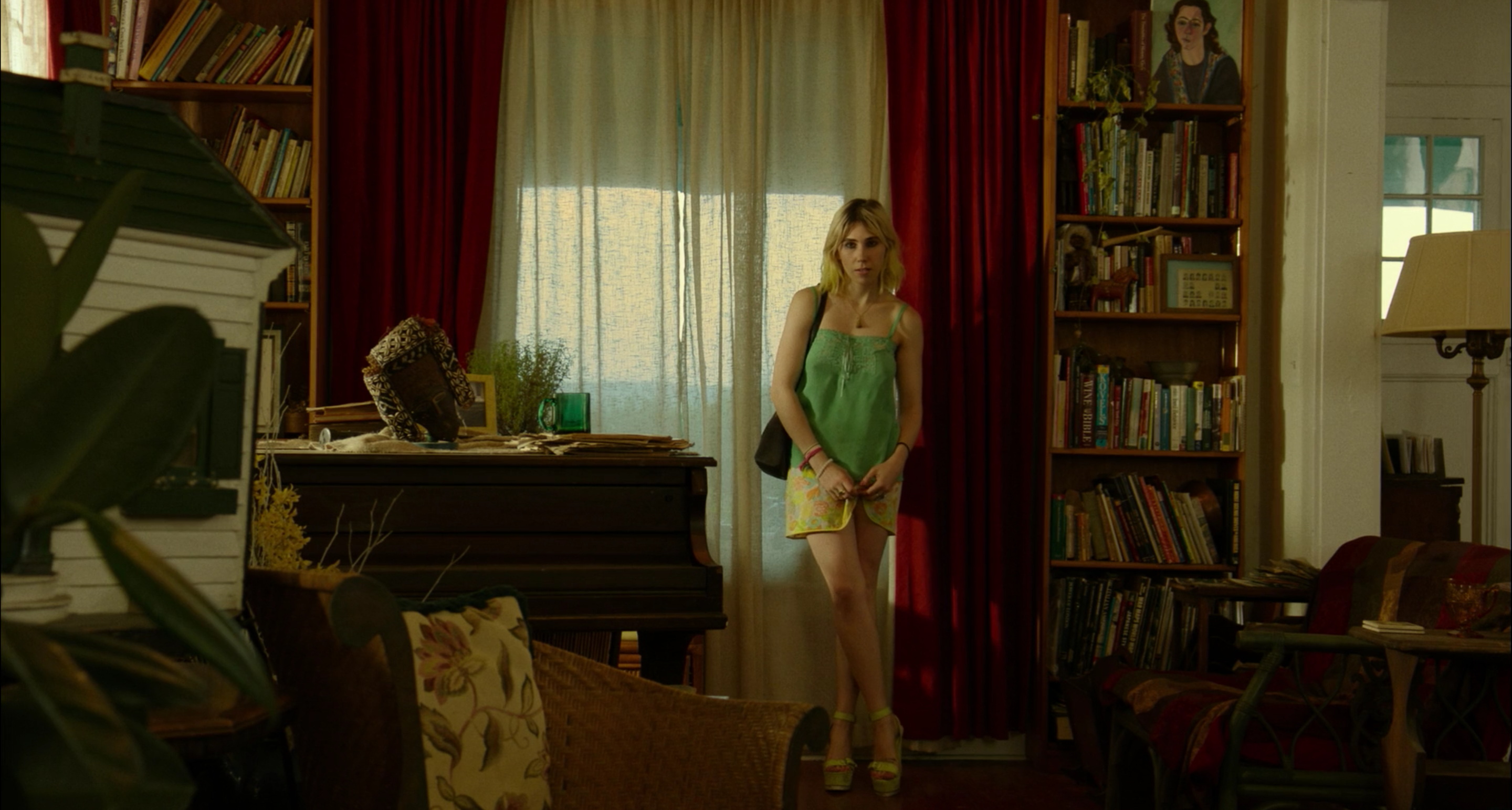
But none of this can hold off mortality. The house is only a temporary refuge from the forest, which at last confirms its kinship with the film’s other greens. Mysterious young girls surround Nana and remind her of her mistakes and cruelties. The dappled natural backdrop suddenly becomes the most powerful agent of constriction. No matter how far the film travels, we cannot escape that very first enclosure. All the world’s a cage, the color of venom.
